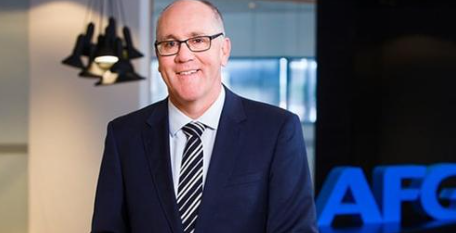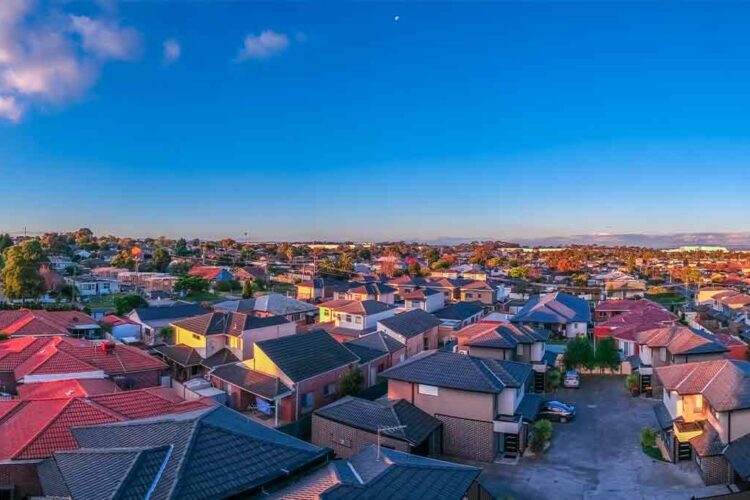Over 46 per cent of NSW postcodes could spill into the “high mortgage risk” zone next month on the back of rising rates, while repayments for recent borrowers in the eastern states are forecast to spike by around 65 per cent, according to a new report.
Digital settlement platform Property Exchange Australia (PEXA) has released its Emerging Mortgage Risk report, which revealed that 181 postcodes — or 46.1 per cent of all postcodes in NSW — are forecast with high or very high mortgage risk by May 2023 when the interest rate cycle is expected to peak.
In comparison, only nine postcodes were at high mortgage risk in December 2020.
The Reserve Bank of Australia (RBA) began its rate rise cycle in May 2022 and hiked the official cash rate 10 consecutive times to 3.60 per cent in March (before pausing in April), while many lenders passed on these rate increases to borrowers.
Mortgage risk has increased across the eastern states as a result, particularly in NSW, while many postcodes have moved from a lower mortgage risk profile to a high-risk profile.
As part of PEXA’s study, mortgage risk is defined as how difficult it is for families within a given postcode to meet their home loan repayments.
The report uses the definition of family from the Australian Bureau of Statistics (ABS) — two or more persons, one of whom is at least 15 years of age, who are related by blood, marriage (registered or de facto), adoption, step or fostering, and who are usually residents in the same household.
Mortgage risk in NSW is mainly concentrated in metropolitan areas, with nearly all the very high-risk postcodes located in Greater Sydney, such as Northbridge (71.8 per cent), Dural (71.4 per cent), and Avalon Beach (69.4 per cent), PEXA’s report revealed.
A mortgage risk band of 60.0 per cent or higher is classified as very high mortgage risk, according to the study.
Loan repayments to rise by tens of thousands of dollars
Adding to mortgagors’ pain, NSW borrowers will require an additional $15,985 per year on average by May 2023 to meet their home loan repayments, an increase of 62.3 per cent from December 2020.
This means mortgagors will have to dedicate more of their income to meet repayments. Indeed, recent borrowers in the eastern states could see their repayments surge by 65 per cent, PEXA said.
In Victoria, more than a fifth (22.3 per cent) of all postcodes — or 74 — is expected to shift into the high mortgage risk category, while in Queensland, 8.7 per cent, or 19 postcodes, are forecast with high mortgage risk.
Victorian home owners will have to fork out an additional $13,327 in loan repayments (up 67.3 per cent from December 2020), while Queenslanders will be $11,567 lighter (up 67.0 per cent).
Affluent areas topped the riskiest postcodes in Victoria (similar to NSW) but both high and low-income areas could be at risk.
“While it is generally expected that families in higher income postcodes may be more insulated against potential mortgage risk, primarily through the likelihood of deeper savings, the size of their loans cannot be understated,” the PEXA study said.
For example, repayments for borrowers in the NSW postcodes of Northbridge and Canterbury are projected to rise by more than $60,000 annually, a sizeable amount irrespective of the borrower’s income.
On the other hand, Queensland’s higher-risk postcodes are tipped to be in lower-income areas, PEXA’s report revealed.
Indeed, 37 per cent of those facing higher mortgage risk were in low-income postcodes and 11 per cent were in very high-income postcodes.
Commenting on the report, PEXA’s head of research, Mike Gill, said: “The Emerging Mortgage Risk report highlights the extent to which more and more borrowers in Australia are being challenged by the current economic conditions.
“With interest rates continuing to rise and the cost of living also squeezing the budgets of households, there has been a pronounced spike in the number of families facing more immediate mortgage risk.”
Moreover, 800,000 fixed rate loans are estimated to expire during 2023 and reset at higher costs, he noted.
This has driven borrowers to seek cheaper deals with different lenders, with ABS data revealing that the value of owner-occupier housing loan refinancing between lenders reached a record high of $13.6 billion in February 2023.
This represented a 3.6 per cent rise from January, according to ABS figures.
“It’s easy to see why refinance volumes are at a record high as mortgagees seek to strike a better deal,” Mr Gill said.
“It’s clear that lending pressure is set to stay in the months ahead.”
If you’re looking to refinance for a better rate or are looking for the right rate for your clients at zero cost, contact Finni Mortgages’ experts and let us do the hard work for you.Visit our website here or call 1300 002 023 to learn more on how we can help you.


